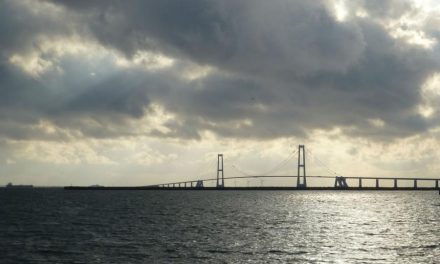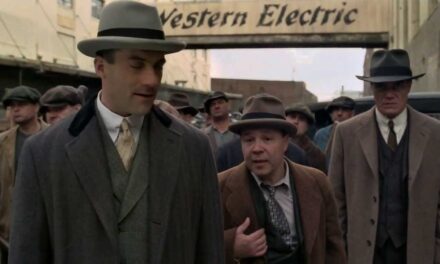NECSUS Autumn 2019_#Gesture
Guest editor: Miriam de Rosa (Coventry University)
A visible action working as utterance, according to Giorgio Agamben gesture is ‘the exhibition of mediality’. It unveils a process and crystallises a meaning into a temporary form, making visible and yet relying upon a sense of deep tactility and materiality, especially when it is performed by the hands. Eliciting the transmission of a meaning, operating in light of a function, and opening up the realm of potentiality, as well as those of action and creativity, gesture shares much with media in their essence. Vilem Flusser associates it with many areas of and beyond media, and analyses it as a process organised after a mechanism of expression and articulation of a certain meaning as well as of affects. Flusser also dwells on what he calls ‘the gesture of making’ – a formulation which immediately draws attention to the link between the concept of gesture and creativity. This special section of NECSUS aims at gathering contributions studying the concept of gesture in a non-medium specific perspective, encouraging instead an interdisciplinary reflection which will shed light onto the many aspects and forms of media in relation to this key theme.
Historically, the fascination for the gesture and the subsequent interest in scrutinising, fragmenting, and isolating it in its components allowed techniques such as chronophotography and the interest towards body mechanics to pursue several experimentations leading to a number of artistic endeavours, eventually feeding into the then-new medium of cinema. Contemporary and modern cinematic forms as stop motion or pin screen animation, and aesthetics such as slow cinema may be genealogically connected to these practices. Pivotal film theoreticians also offer important reflections on gestures, interpreting them in a variety of ways (from Eisensein to Balasz, and more recently from Mulvey to Bellour, from José Gill to Blüminger and Lavin). At the same time, other key aspects of cinema are closely connected to the idea of gesture. Observations of the actor both in bodily presence, proxemics, and performative skills to convey a cognitive or affective meaning allows for another reflection on this topic. Offering the opportunity for an alternative reading of bodies and affects, gestures also lend themselves as features of gendered and specific cultural identities, shaping them into actions performed by ‘volatile bodies’. Also worth considering is the array of gestures performed by the spectator or the gallery visitor: similar to the actor, and yet with a completely different degree of freedom and continuity, spectators/visitors also put into play actions and motions constituting and constantly renovating an etiquette of moving image reception. Their memory of the medium as well as their pragmatic and emotional connection with the medium they are relating themselves to can therefore be described by way of a gestural reading.
The emphasis on motion and the fascination for movement both in conceptual and pragmatic/symbolic terms is not limited to cinema. As George Didi-Huberman’s compelling reflection on anachronisms and recent curatorial projects (e.g. Soulèvements, 2017) thoroughly demonstrate, contemporary artists reflect on the classic theme of aesthetic forms activating a ‘procedural thinking’ that may echo Flusser’s ‘gesture of making’, and tend to look into gesturality in order to focus on the riveting connections between resemblance and representation via the concepts of contact and print. Furthermore, when the medium involved is not relying on the big screen, a focus on gestures can represent an interesting prism for looking at media users as they express their agency; an observation of this can offer the opportunity for inquiry and develop a study of the user’s design of experience, as well as her way of inhabiting space, the socio-cultural context, and her relationship with material culture. On an epistemological level, looking into gestures may unveil interesting linkages between making and thinking, and thereby elicit a reconsideration of the relationship and hierarchy between theory and practice. Compared to ‘artisans and alchemists’, our hands – as Henri Focillon defines them in his Praise of Hands (1972) – enable creative and innovative ways of making to think and thinking to make: in such a framework, gesture is that which gives shape and consistency to thought. In this vein, it is possible to frame the strong development of practice-based research and pedagogy, as well as of applied and hands-on approaches. Key terms in this sense include videographic studies, DIY, artisanal, and experimental media practices ranging from organic chemical photo-film development to hacking.
This call for submissions invites contributions dealing with, but not limited to, #Gesture and the following topics:
- # still and moving images (issues of temporality, slow cinema, animation)
- # affects and bodies (of the actor, the spectator, the film, as well as key elements for a gendered body)
- # action, creation and media
- # material culture and tactility beyond haptic cinema (issues of spectatorship; touch and screens; media and ergonomics)
- # mediation and potentiality
- # making/thinking: practice-based/artistic research, videographic practices as research, DYI, the return of the lab as research environment and style in media studies
- # the digital and post-digital (memes and their circulation; selfies; online tracking; VR and AR; print)
We look forward to receiving abstracts of 300 words, 3-5 bibliographic references, and a short biography of 100 words by 15 January 2019 to g.decuir@aup.nl. On the basis of selected abstracts, writers will be invited to submit full manuscripts (5,000-7,000 words, revised abstract, 4-5 keywords) which will subsequently go through a double-blind peer review process.
NECSUS also accepts abstract submissions on a rolling basis throughout the year for a wide variety of articles on a number of themes related to media studies but not necessarily connected to a special section topic, in addition to proposals for festival, exhibition, and book reviews, as well as audiovisual essays. Please note that we do not accept full manuscripts for consideration without an invitation.
Access our submission guidelines at necsus-ejms.org/guidelines-for-submission/





